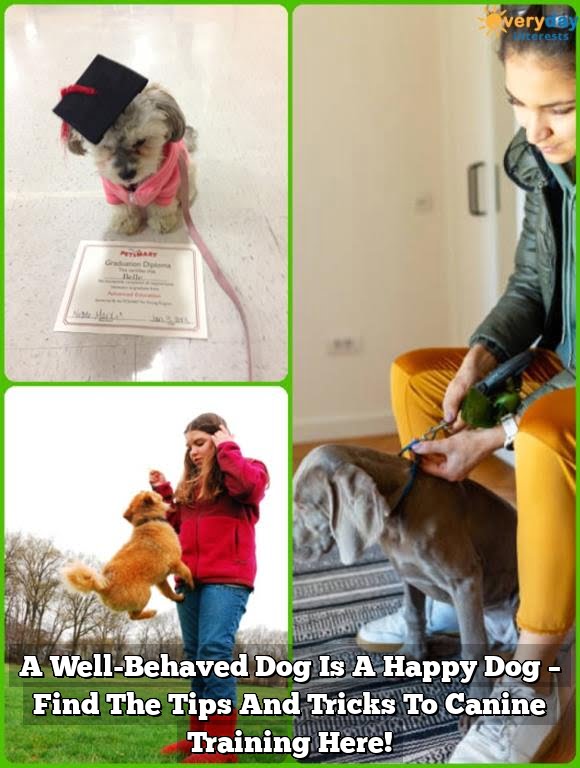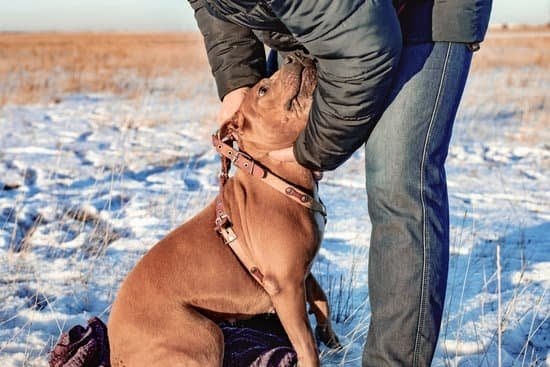Training a bad behaved dog can be a daunting task for any owner. The challenges of dealing with behavioral issues and the negative impact of an unruly dog on both the owner and others cannot be overlooked.
In this article, we will explore the importance of addressing bad behavior in dogs, identify common signs of a poorly behaved dog, and discuss the consequences of disobedience. By understanding these challenges, we can begin to tackle them head-on and work towards transforming our furry friends into well-behaved companions.
Addressing behavioral issues in dogs is crucial for several reasons. Firstly, it ensures the safety and well-being of both the dog and those around them. Dogs with bad behavior tendencies may exhibit aggression, destructive chewing, or excessive barking, making it difficult to have a peaceful coexistence.
Secondly, training a badly behaved dog helps establish boundaries and strengthens the bond between owner and pet. With proper training, dogs learn to understand their role in the household hierarchy, leading to a more harmonious living environment.
Identifying common signs of bad behavior is the first step in tackling these issues effectively. Some visible signs include constant jumping on people, pulling on leash during walks, or refusing obedience commands. These behaviors not only disrupt daily life but also indicate a lack of discipline or understanding from the dog’s perspective. Failing to address these problems can result in frustration for both the owner and their furry friend.
To transform a misbehaving canine into a well-mannered companion requires time, patience, and consistent effort from the owner. Fortunately, whether your dog is exhibiting anxiety-related behaviors or inherited genetic tendencies towards certain behaviors, there are methods you can employ to correct them. By following established training protocols and utilizing positive reinforcement techniques, it is possible to reshape your dog’s behavior and create a stronger bond based on trust and respect.
In this article, we will dive deep into various aspects of training a badly behaved dog. We will explore the root causes behind bad behavior, establish a solid foundation of obedience training, address aggression and socialization issues, tackle separation anxiety, deal with unwanted behaviors such as jumping or chewing, and monitor progress to maintain a well-behaved canine companion.
By understanding these challenges and implementing effective training techniques, we can celebrate the transformation of our dogs and strengthen the bond between owner and pet.
Assessing the Root Causes of Bad Behavior
Understanding why a dog exhibits bad behavior is crucial in addressing and effectively training a disobedient pet. Assessing the root causes of bad behavior helps identify underlying issues that may be driving the undesirable actions. By examining possible reasons behind these behaviors, owners can develop targeted strategies to address them and create a harmonious relationship with their furry companions.
Identifying Potential Underlying Issues
One of the first steps in assessing the root causes of bad behavior is to determine if there are any underlying issues that may be contributing to it. Dogs may exhibit aggression, fearfulness, or destructive behaviors as a result of anxiety, fear, or past trauma. It is essential to observe and analyze the context in which these behaviors occur to understand their triggers and potential root causes.
Recognizing the Role of Genetics
Genetics also play a role in a dog’s behavior. Certain breeds may have specific characteristics or tendencies that make them more prone to certain challenges. Understanding breed traits and predispositions can help identify potential root causes of bad behavior and tailor training techniques accordingly. However, it is important not to solely blame genetics for bad behavior but instead focus on addressing and modifying these behaviors through appropriate training methods.
Seeking Professional Help if Necessary
Sometimes, assessing the root causes of bad behavior can be challenging for owners without proper knowledge or experience. In such cases, seeking professional help from trainers or animal behaviorists can provide valuable insights into understanding the underlying causes. These professionals have expertise in analyzing canine behavior, diagnosing issues accurately, and recommending effective training strategies to address them. Seeking external assistance is especially important when dealing with severe aggression or complex behavioral problems that require specialized knowledge and skills.
Establishing a Strong Foundation
Basic obedience training is a crucial step in addressing the bad behavior of a dog. This section will focus on the key aspects of establishing a strong foundation through basic obedience training.
Firstly, teaching essential commands such as sit, stay, and come is fundamental in ensuring that a dog understands and follows instructions. These commands not only provide structure and control but also create a connection between the dog and its owner. Positive reinforcement techniques should be employed during training sessions to encourage desired behaviors. Rewards such as treats, praise, and play can motivate the dog to learn and obey commands effectively.
Consistency and timing are vital elements in basic obedience training. It is essential to set aside regular training sessions to reinforce the learning process. Short but frequent sessions are more effective than long, sporadic ones. Maintaining consistency in expectations and rewards helps the dog understand what is expected of them.
It is worth mentioning that each dog has its own learning pace, so patience is key throughout this process. Some dogs may grasp commands quickly while others may require more time and repetition. It is important not to get frustrated or give up easily on challenging cases. By remaining patient and positive during training, an owner can establish a strong foundation for future behavioral improvements.
| Establishing a Strong Foundation: Basic Obedience Training |
|---|
| – Teaching sit, stay, and come commands |
| – Utilizing positive reinforcement techniques |
| – Consistency and timing in training sessions |
Leash Training and Recall
Leash training is an essential part of training a bad behaved dog as it helps regain control and ensure the safety of both the dog and the owner. Many dogs display unwanted behaviors such as pulling, lunging, or being overly reactive while on a leash, making walks stressful and unpleasant. By implementing proper leash manners, owners can establish boundaries and teach their dogs to walk calmly by their side.
One effective technique for leash training is using positive reinforcement. This involves rewarding your dog with treats or praise when they exhibit desirable behavior, such as walking without pulling or staying close to you. It’s important to time the rewards well and provide them consistently so that your dog associates good behavior with positive outcomes.
Building trust and strengthening the bond between you and your dog is another crucial aspect of leash training. During walking sessions, take the time to engage in activities that promote bonding, such as playing games or giving your dog opportunities to sniff around. By creating a positive and enjoyable experience on the leash, your dog will be more likely to cooperate and listen to commands.
Recall training is also vital when it comes to regaining control of a bad behaved dog. Having a reliable recall command allows you to call your dog back to you even in distracting or potentially dangerous situations. Start by practicing recall in a controlled environment with minimal distractions before gradually increasing the difficulty level.
To reinforce recall training, use high-value rewards like favorite toys or treats that your dog finds especially enticing. When calling your dog back, use an excited tone of voice and make yourself more interesting by running away from them or making exciting noises. This will encourage your dog to come back willingly because they associate it with fun experiences.
| Tips for Leash Training | Tips for Recall Training |
|---|---|
| Use positive reinforcement techniques | Practice recall in a controlled environment |
| Be consistent and patient with training sessions | Use high-value rewards for reinforcement |
| Establish trust and bond during walking sessions | Use an excited tone of voice when calling your dog back |
By implementing these techniques and consistently practicing leash training and recall, owners can regain control over their bad behaved dogs and enjoy more enjoyable walks while strengthening the bond between them. Remember, patience and consistency are key, and seeking professional help if needed can also contribute to the success of leash training and recall.
Addressing Aggression
Aggression in dogs can be a serious problem, and addressing it is crucial to ensure the safety of both the dog and others. Understanding the different types of aggression is the first step in effectively managing and modifying this behavior. Some common forms of aggression include fear-based aggression, protective aggression, and inter-dog aggression.
To tackle aggression in your dog, a technique known as desensitization and counterconditioning can be highly effective. Desensitization involves gradually exposing your dog to the triggers that prompt their aggressive behavior, but at a level where they remain calm and relaxed. For example, if your dog becomes aggressive when meeting new people, start by having a friend stand several feet away from them while rewarding your dog for remaining calm.
Counterconditioning goes hand-in-hand with desensitization and involves changing your dog’s emotional response to the trigger. Using positive reinforcement techniques such as treats or praise can help create positive associations with these situations. Remember to be patient during this process as it may take time for your dog to associate positive experiences with their previous triggers.
Controlled socialization is another important aspect of addressing aggression in dogs. Gradually introducing them to new environments, people, and other animals can help them feel more comfortable and less reactive. Start by introducing your dog to controlled social settings such as obedience classes or playdates with well-behaved dogs. Monitor their reactions closely and reward calm behavior.
In addition to these techniques, seeking professional help from a certified animal behaviorist or trainer specializing in aggression issues may be necessary for some cases. They can provide expert guidance tailored to your specific situation and offer further insight into understanding your dog’s aggressive behavior.
By addressing aggression through instilling social skills, you are working towards creating a safer environment for both your dog and those around them. Remember that modifying aggressive behavior takes time, consistency, and patience. Stay committed to the process, and with proper training and management, you can help your dog become a well-behaved and balanced member of your family.
Managing Separation Anxiety
Separation anxiety is a common behavior problem in dogs that can lead to destructive and distressing behaviors when the owner is away. In this section, we will discuss how to manage separation anxiety and create a positive environment for your dog.
Identifying signs of separation anxiety is the first step in managing this issue. Some common signs include excessive barking or whining, destructive chewing or scratching, pacing, attempting to escape, or inappropriate elimination. If your dog exhibits these behaviors specifically when you leave or are preparing to leave the house, it is likely they are experiencing separation anxiety.
Gradual desensitization is an effective technique for helping a dog with separation anxiety become more comfortable being alone. Start by gradually increasing the amount of time you spend away from your dog. Begin with very short periods, such as leaving the room for a few seconds, then gradually increase the duration over time. This helps your dog build confidence and learn that you will always return.
Enrichment activities and mental stimulation can also help alleviate separation anxiety. Provide your dog with interactive toys or puzzle feeders to keep them occupied while you’re away. Consider using calming aids such as pheromone diffusers or soothing music designed specifically for dogs to create a relaxing environment.
Correcting Unwanted Behaviors
Unwanted behaviors can be a source of frustration and stress for dog owners, but with the right approach, these behaviors can be corrected. This section focuses on addressing specific unwanted behaviors such as jumping and chewing.
Jumping is a common behavior that can be both annoying and potentially dangerous, especially if the dog jumps on strangers or small children. To correct this behavior, it is important to teach the dog an alternative behavior to replace jumping. One effective technique is redirection.
When your dog starts to jump, redirect their attention by commanding them to sit or lie down. Once they comply, reward them with praise and treats. Consistency is key in this process, as allowing your dog to jump on certain occasions will only confuse them.
Chewing is a natural behavior for dogs, but it can become destructive when they chew on inappropriate items like furniture or shoes. To address this behavior, provide your dog with appropriate chew toys and make sure they have plenty of opportunities for exercise and mental stimulation.
Whenever you catch your dog chewing on something they shouldn’t, firmly say “no” and redirect their attention to an appropriate toy or bone. Consistency and patience are crucial in training a dog not to chew on forbidden objects.
In addition to these specific behaviors, it’s important to remember that positive reinforcement should always be the primary method of correction. Punishment-based techniques can escalate unwanted behaviors or create fear in the dog. By rewarding good behavior with treats, praise, and affection, you are creating a positive association in the dog’s mind.
Remember that correcting unwanted behaviors takes time and patience. Every dog learns at their own pace, so consistency in training sessions is key. With dedication and proper guidance using positive reinforcement techniques, you can help your bad behaved dog transform into a well-behaved companion.
Monitoring Progress
Maintaining a well-behaved dog requires ongoing monitoring and reinforcement. As you continue the training journey with your bad behaved dog, it is important to assess their progress and make any necessary adjustments. By staying vigilant and proactive, you can ensure that your dog’s behavior remains on track and continues to improve. Here are some tips for monitoring progress and maintaining a well-behaved dog:
- Regular Training Sessions: Even after the initial training period, it is important to continue with regular training sessions to reinforce good behavior and prevent regression. Set aside dedicated time each day or week for training exercises, focusing on commands they have already learned as well as introducing new ones.
- Consistency: Consistency is key in maintaining a well-behaved dog. Ensure that everyone in the household follows the same rules and enforces them consistently. Inconsistencies in expectations and consequences can confuse your dog, leading to unwanted behaviors resurfacing.
- Reinforcement: Positive reinforcement should remain a primary focus throughout your dog’s training journey. Continue to reward desired behaviors with treats, praise, or playtime as appropriate. Reinforcing good behavior encourages your dog to continue exhibiting those behaviors and reinforces the bond between you.
- Recognizing Setbacks: It is important to be aware that setbacks may occur during the training process with a bad behaved dog. This may include occasional relapses into old habits or even new challenges arising. If setbacks do occur, remain patient and committed to addressing them promptly.
- Troubleshooting: Sometimes, despite our best efforts, we encounter difficulties during the training process. Don’t hesitate to seek professional help if needed; a qualified trainer or animal behaviorist can provide guidance tailored specifically to your dog’s unique needs.
- Exercise and Mental Stimulation: Regular exercise is essential for dogs’ overall well-being, both physically and mentally. Engage your dog in activities such as daily walks, puzzle toys, or obedience training games that challenge their mind. Adequate mental and physical stimulation can help prevent boredom and reduce the likelihood of unwanted behaviors.
By monitoring progress closely and taking appropriate actions to reinforce good behavior, you are more likely to maintain a well-behaved dog. Remember that every dog is unique, and training progress may vary. Celebrate the positive changes you see in your dog’s behavior and continue to provide them with the love, care, and guidance they need for a happy and well-balanced life.
Conclusion
In conclusion, training a badly behaved dog requires patience, consistency, and a deep understanding of the root causes of their behavior. Throughout the training process, it is important to address any underlying issues such as anxiety or fear that may be contributing to their bad behavior. Seeking professional help when necessary can provide the guidance and expertise needed for a successful transformation.
Establishing a strong foundation through basic obedience training is crucial in retraining a misbehaved dog. Teaching commands like sit, stay, and come using positive reinforcement techniques helps to build trust and create a bond between the owner and the dog. Consistency and timing during training sessions are key factors in reinforcing desired behaviors.
Leash training and recall exercises are essential for regaining control over a badly behaved dog. Implementing proper leash manners promotes better behavior during walks and helps strengthen the bond between owner and dog. Training recall ensures that the dog will be responsive when called upon, even in distracting situations.
Addressing aggression requires understanding its different types and implementing desensitization techniques. Encouraging controlled socialization helps dogs learn appropriate behaviors with other animals and humans. Managing separation anxiety involves gradual desensitization to being alone, providing enrichment activities, and mental stimulation to keep them calm and occupied.
Correcting unwanted behaviors such as jumping or chewing involves understanding the causes behind these actions. Utilizing redirection and positive reinforcement redirects their attention to more appropriate behaviors while reinforcing good habits. Monitoring progress is crucial throughout the training process, acknowledging setbacks as learning opportunities while celebrating positive changes in behavior.
Ultimately, training a badly behaved dog results in strengthening the bond between owner and pet. Acknowledging the effort put into training by both parties is essential for successful transformation. By continuing to prioritize ongoing training, responsible ownership practices, exercise, mental stimulation, owners can ensure that their furry companions become well-behaved dogs who can thrive in harmonious environments.
Frequently Asked Questions
How do I get my dog to stop bad behavior?
To get your dog to stop bad behavior, it is important to first identify the underlying cause of the behavior. Dogs may exhibit bad behavior due to a lack of exercise, boredom, fear, anxiety, or even medical issues. Once you have pinpointed the cause, you can address it accordingly. Positive reinforcement training techniques are highly effective in modifying bad behavior.
Instead of punishing your dog for their actions, focus on rewarding and praising them when they display desirable behaviors. Consistency is key in training, so establish clear rules and boundaries for your dog and ensure that everyone interacting with them follows these guidelines. Seek professional help from a reputable dog trainer or animal behaviorist if necessary.
How do you train a dog that doesn’t respond to discipline?
When training a dog that doesn’t respond to discipline, it is essential to reevaluate your approach and consider alternative methods. Some dogs may not respond well to traditional disciplinary measures such as scolding or punishment and may require a different approach. Positive reinforcement training methods prove helpful in encouraging desired behavior by rewarding good actions with treats, praise, or playtime.
Patience is crucial when training a dog that is less responsive; it may take more time and repetition before they understand what you expect from them. Identifying their motivators, whether it be food, toys, or attention, can also make the training process more effective.
How do you train a dog with bad manners?
Training a dog with bad manners requires consistency and patience to instill new habits and manners into their routine. Begin by setting clear expectations for what constitutes good manners in your household and stick to those guidelines consistently. For example, if your dog jumps on people when greeting them at the door, teach them an alternative behavior like sitting calmly instead and reward them for doing so appropriately.
Break down the training into smaller steps so that your dog can gradually learn each aspect of good manners without feeling overwhelmed. Incorporate reward-based training techniques where positive behaviors are reinforced with treats or praise as this will motivate your dog to repeat the desired manners. Stay committed and consistent throughout the training process to help your dog develop better manners over time.

Welcome to the blog! I am a professional dog trainer and have been working with dogs for many years. In this blog, I will be discussing various topics related to dog training, including tips, tricks, and advice. I hope you find this information helpful and informative. Thanks for reading!





